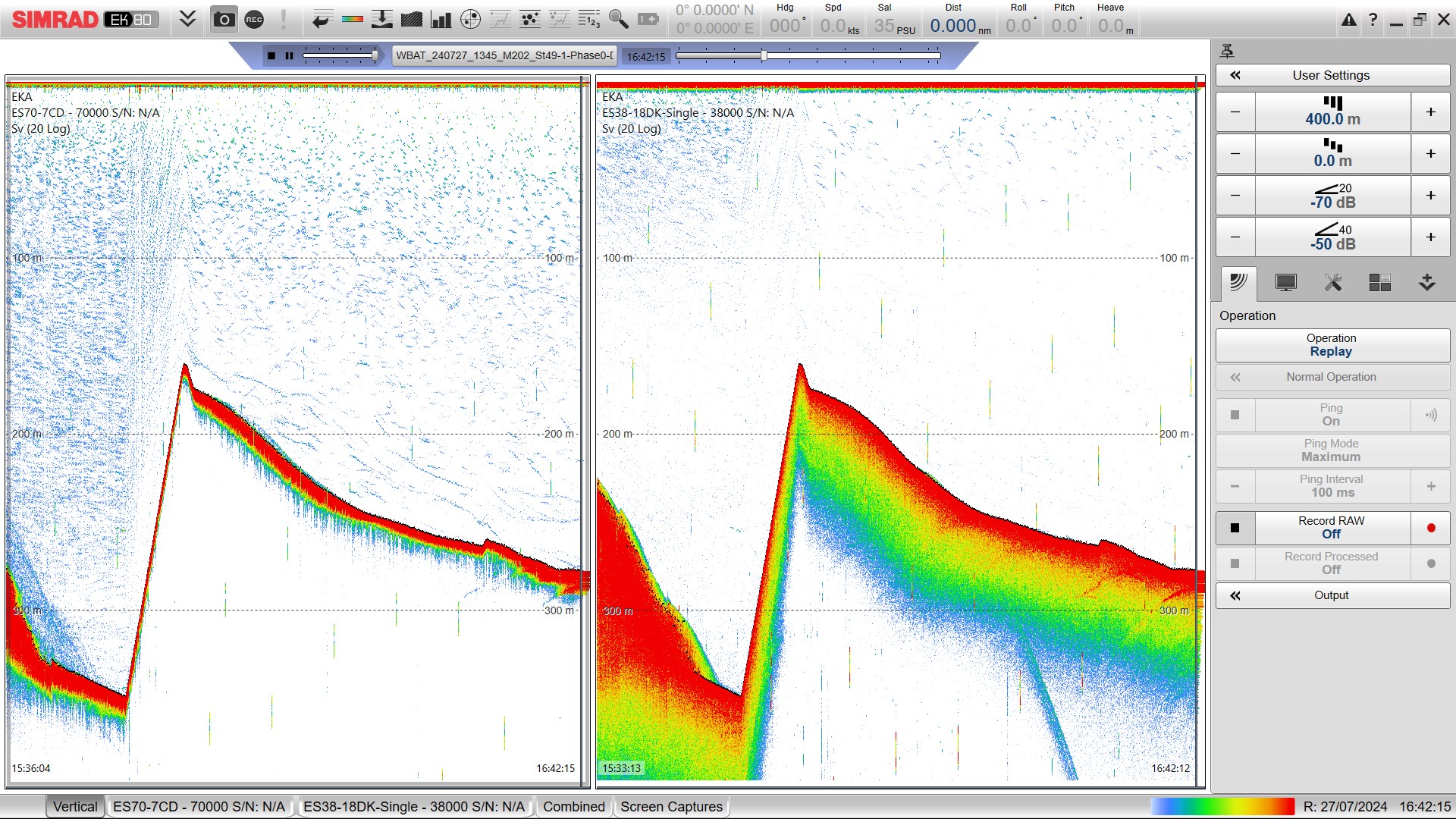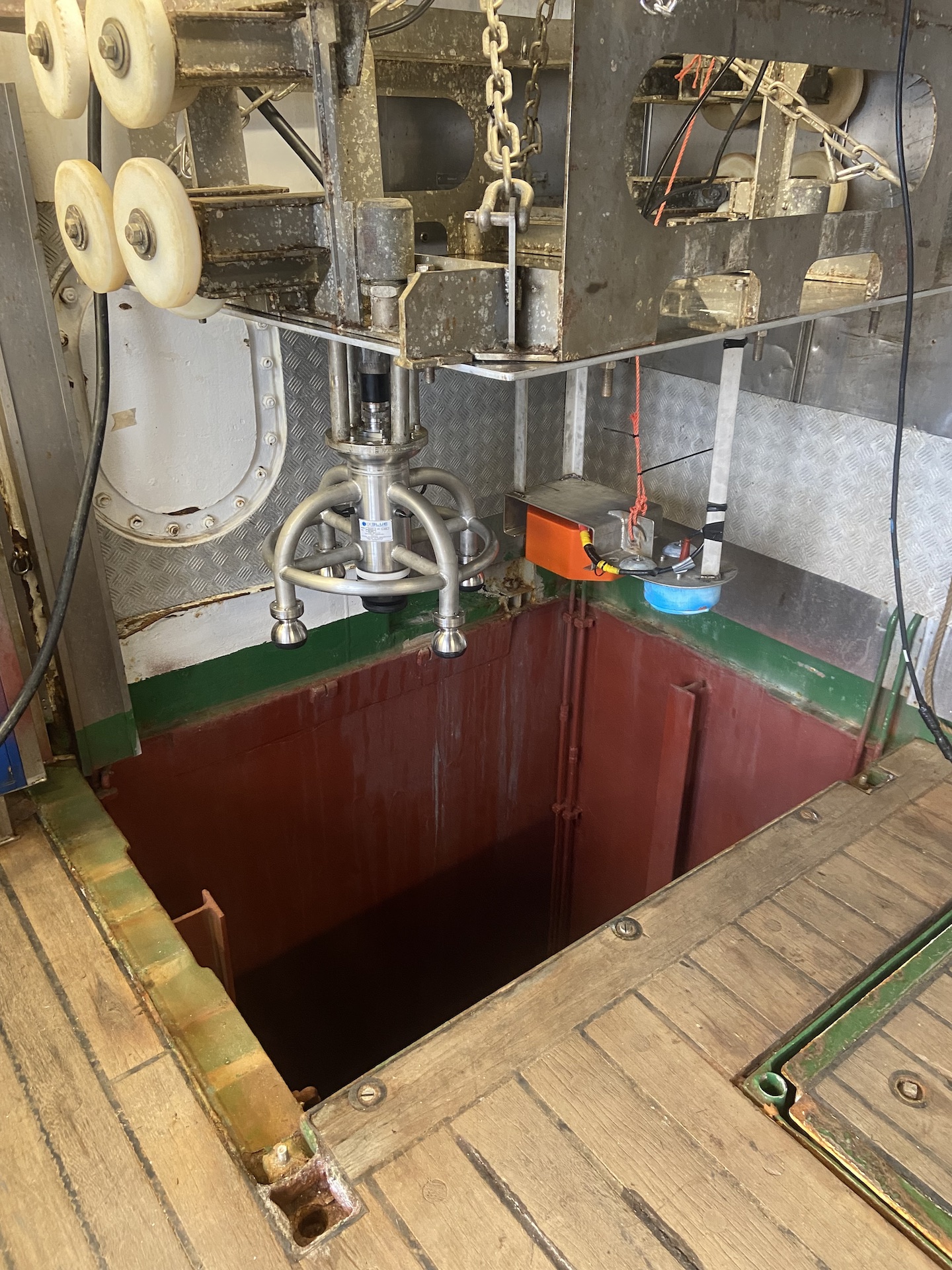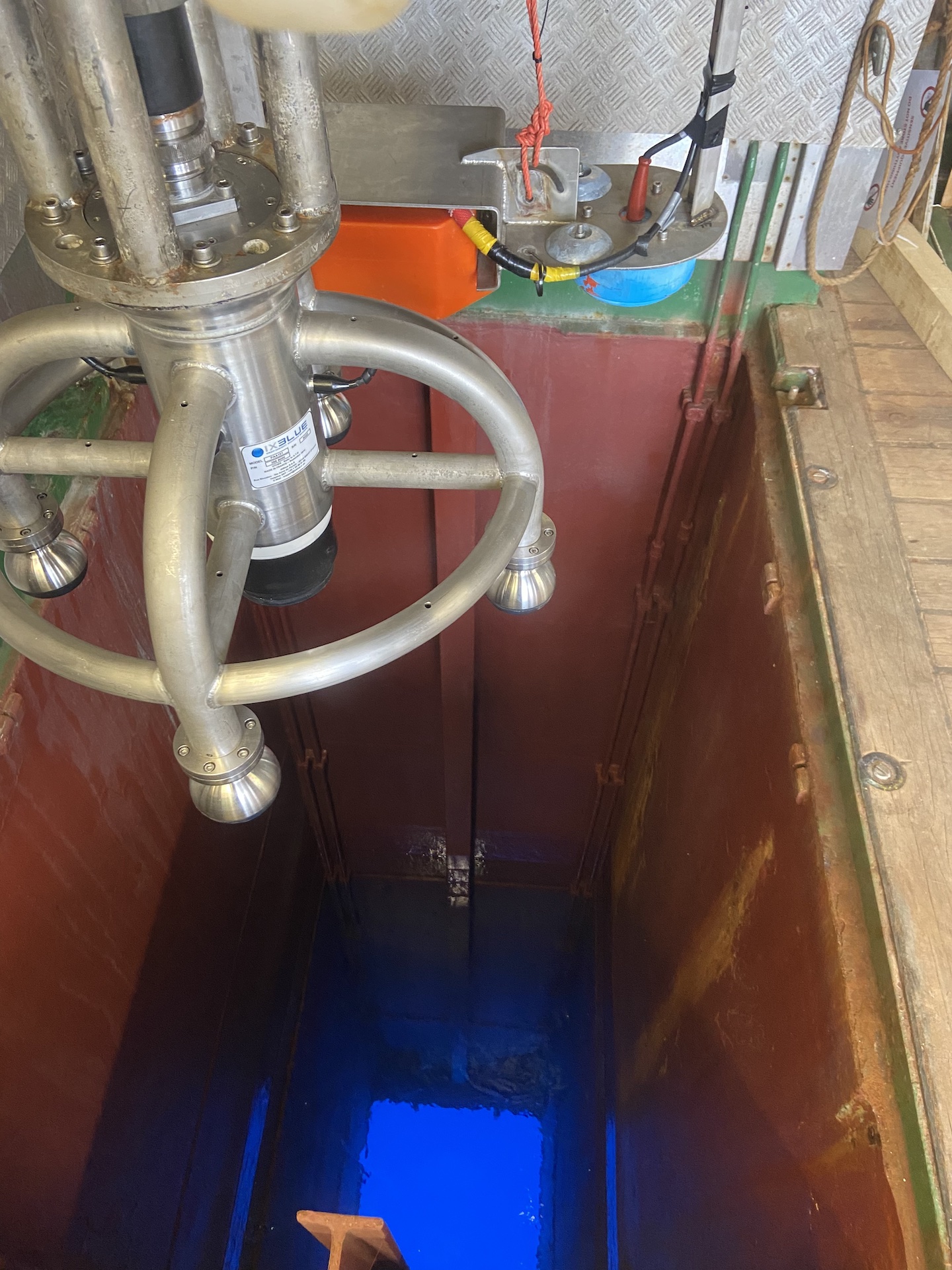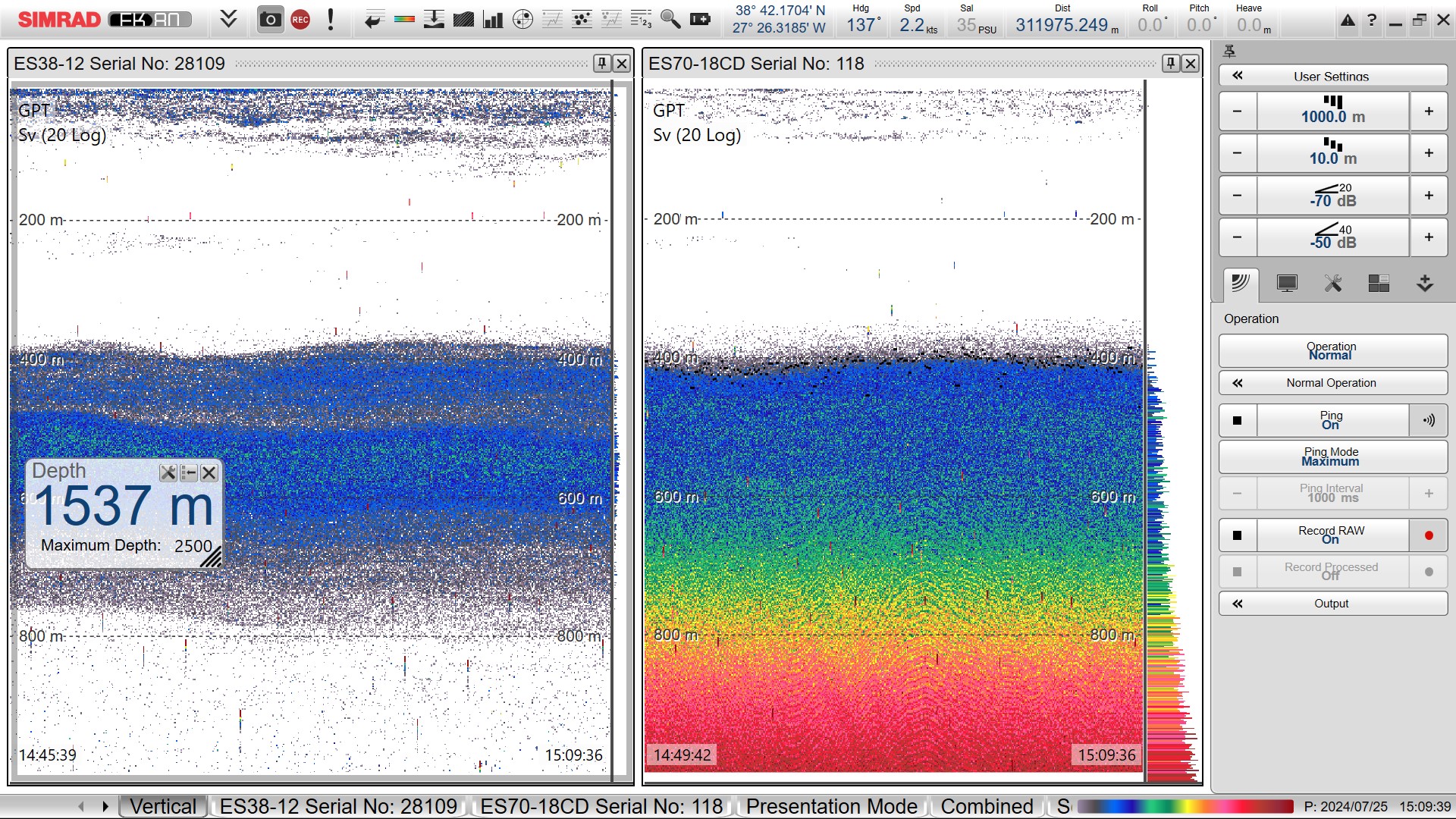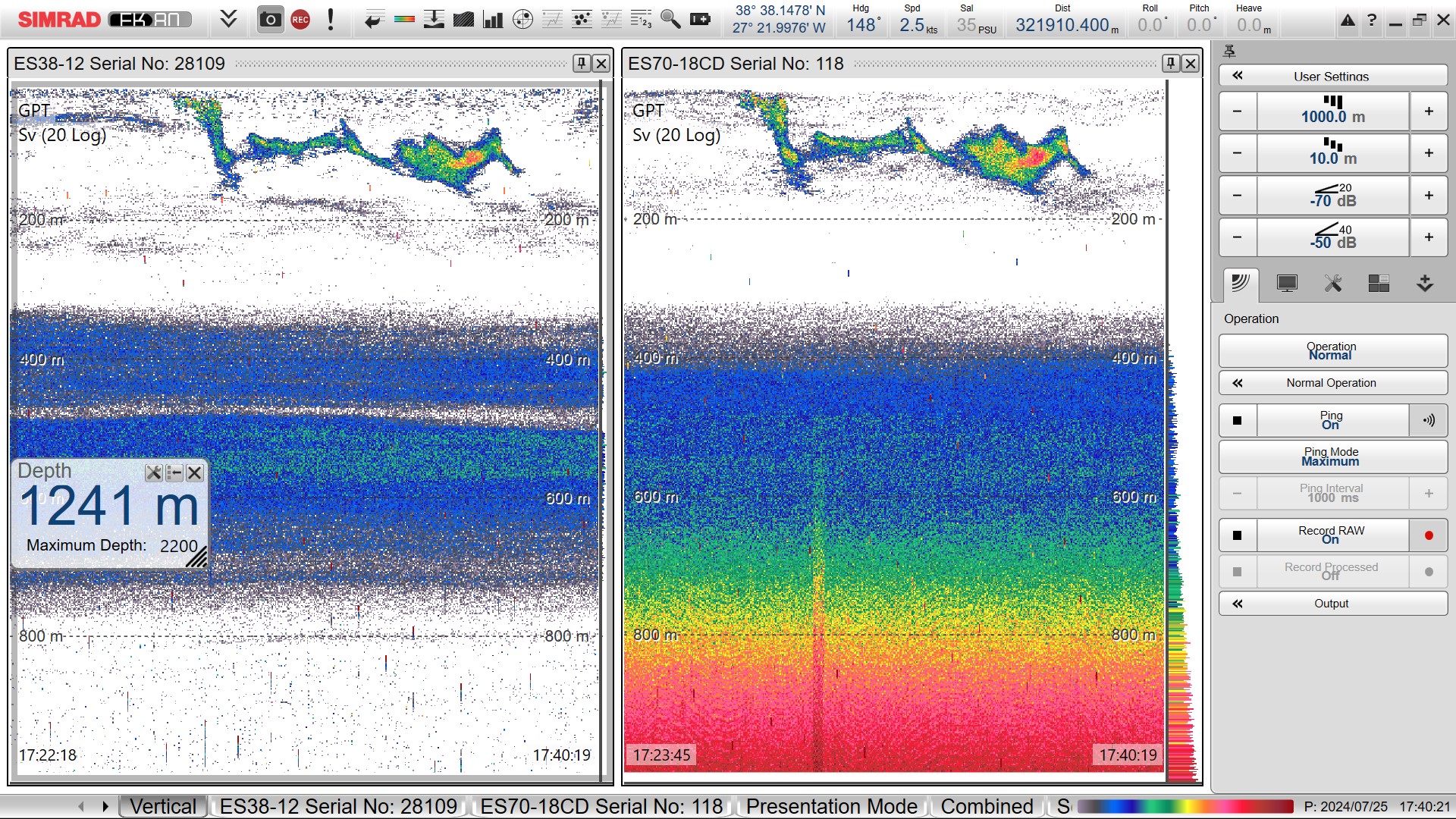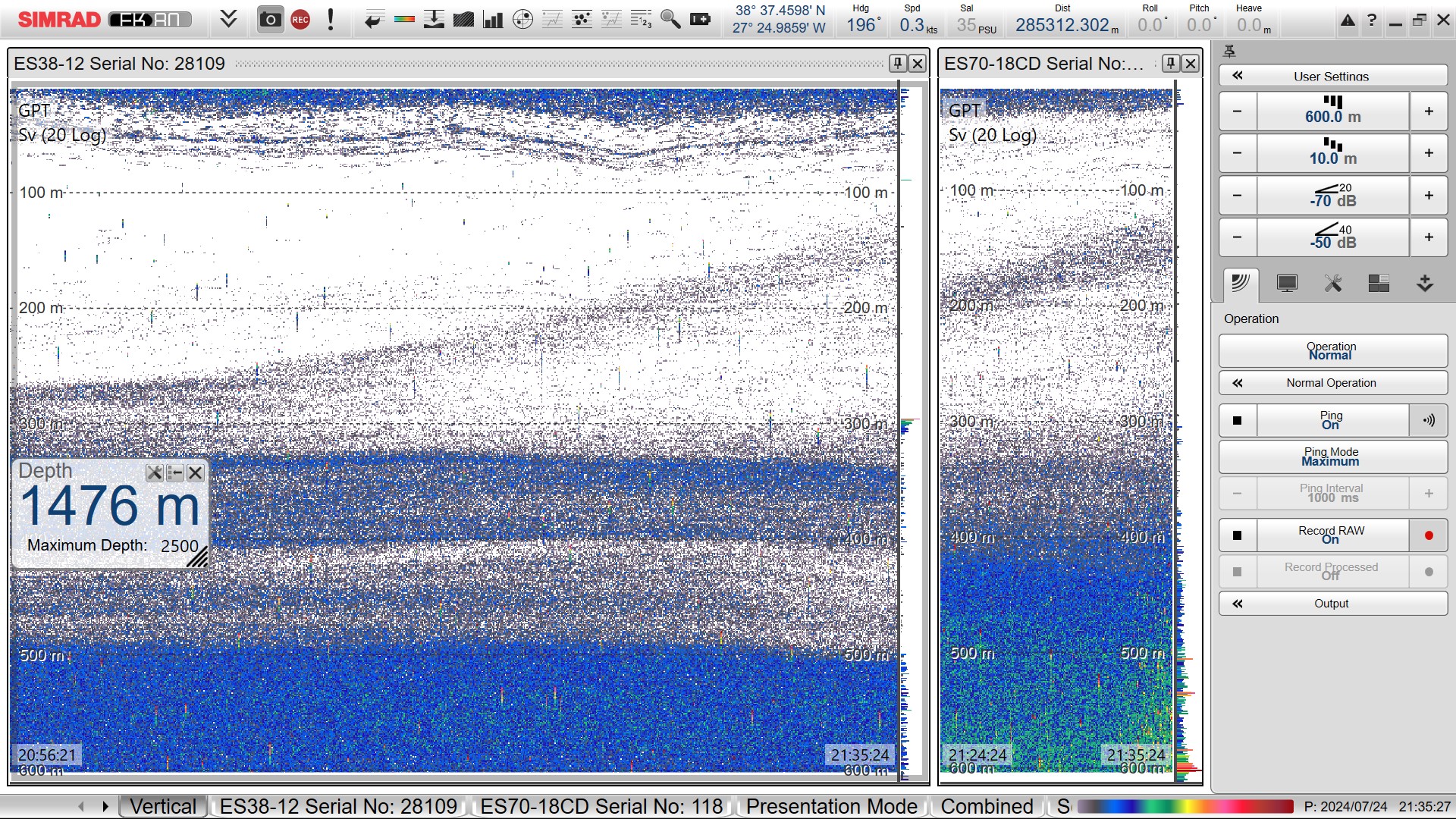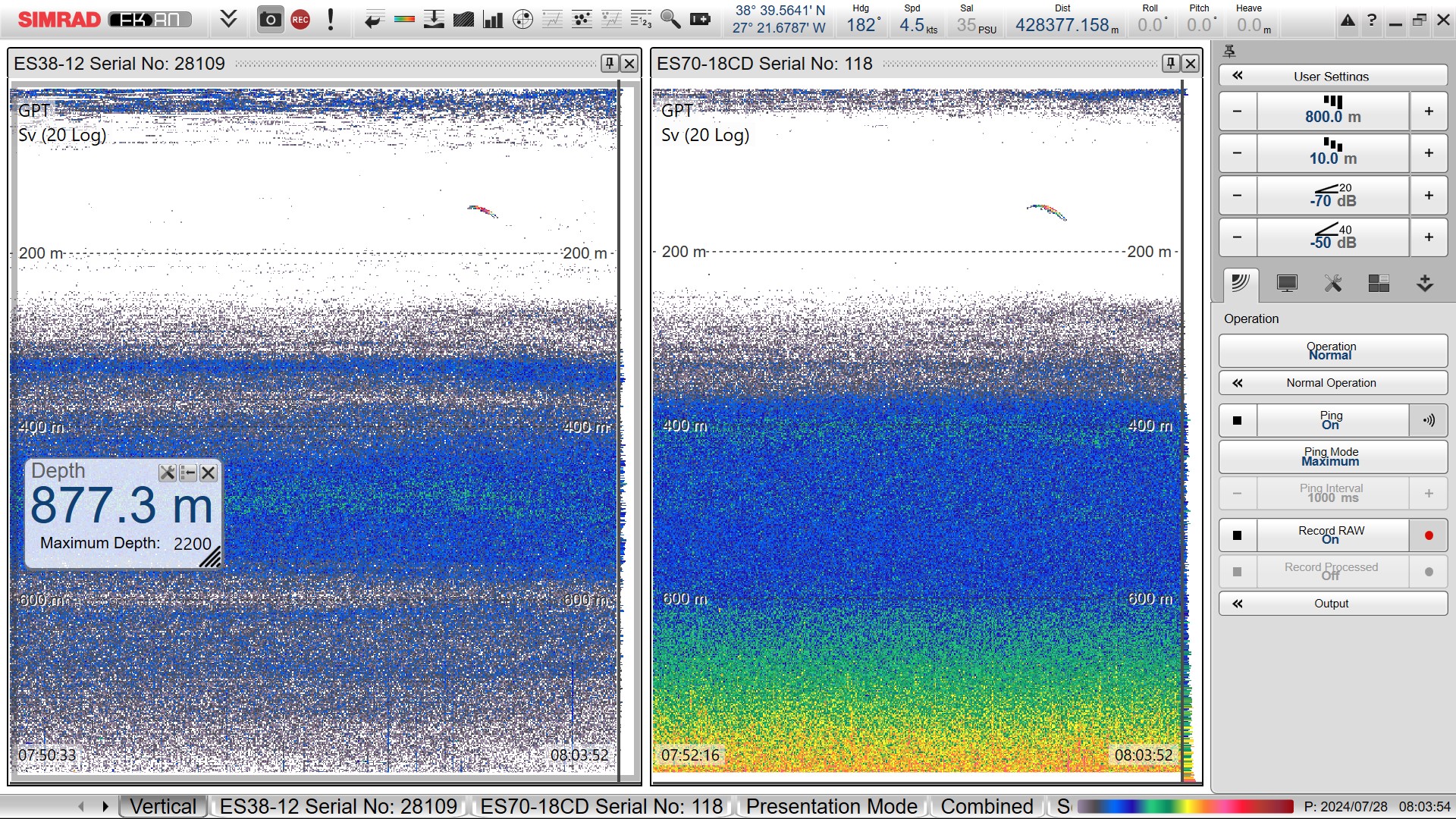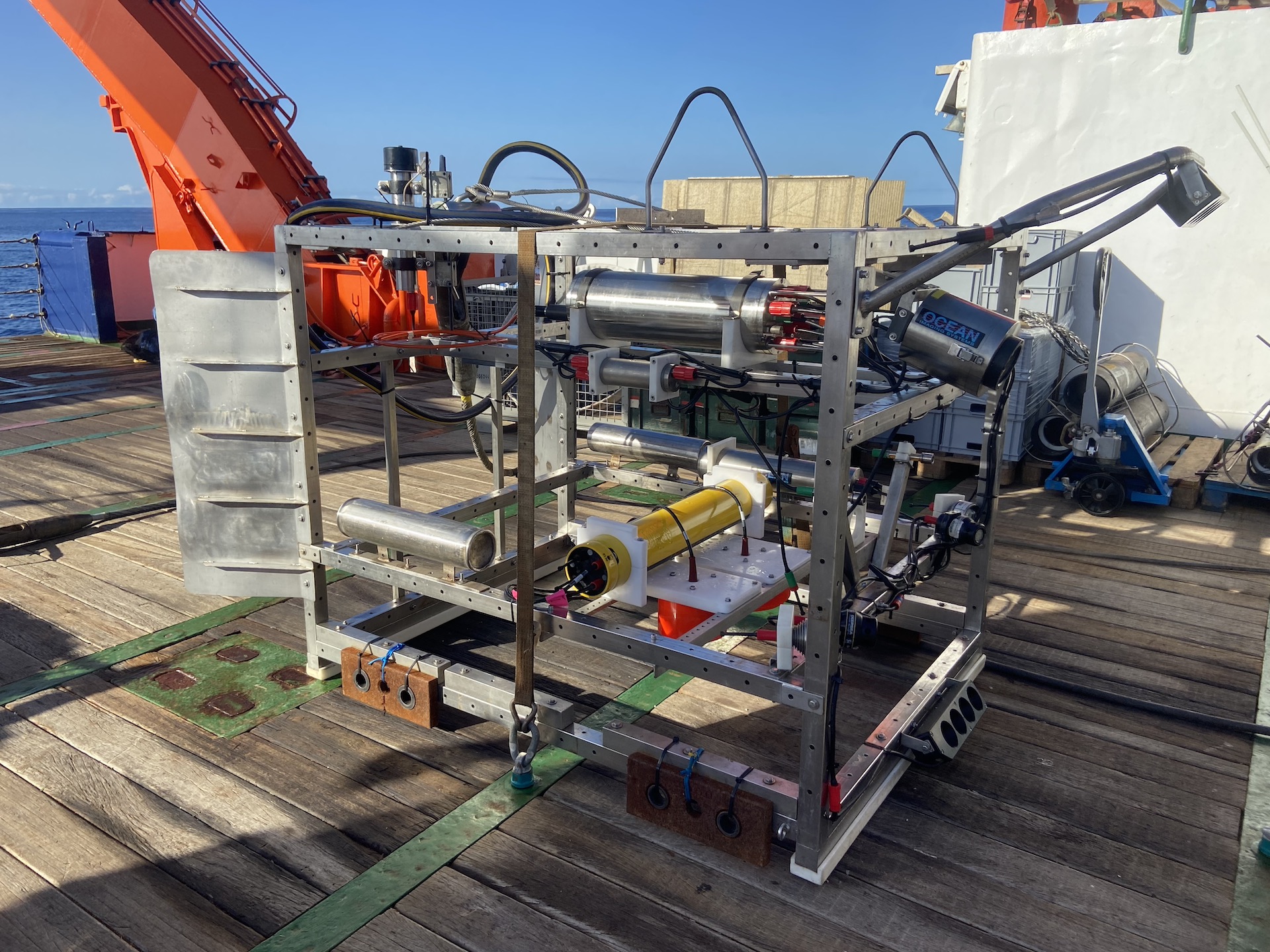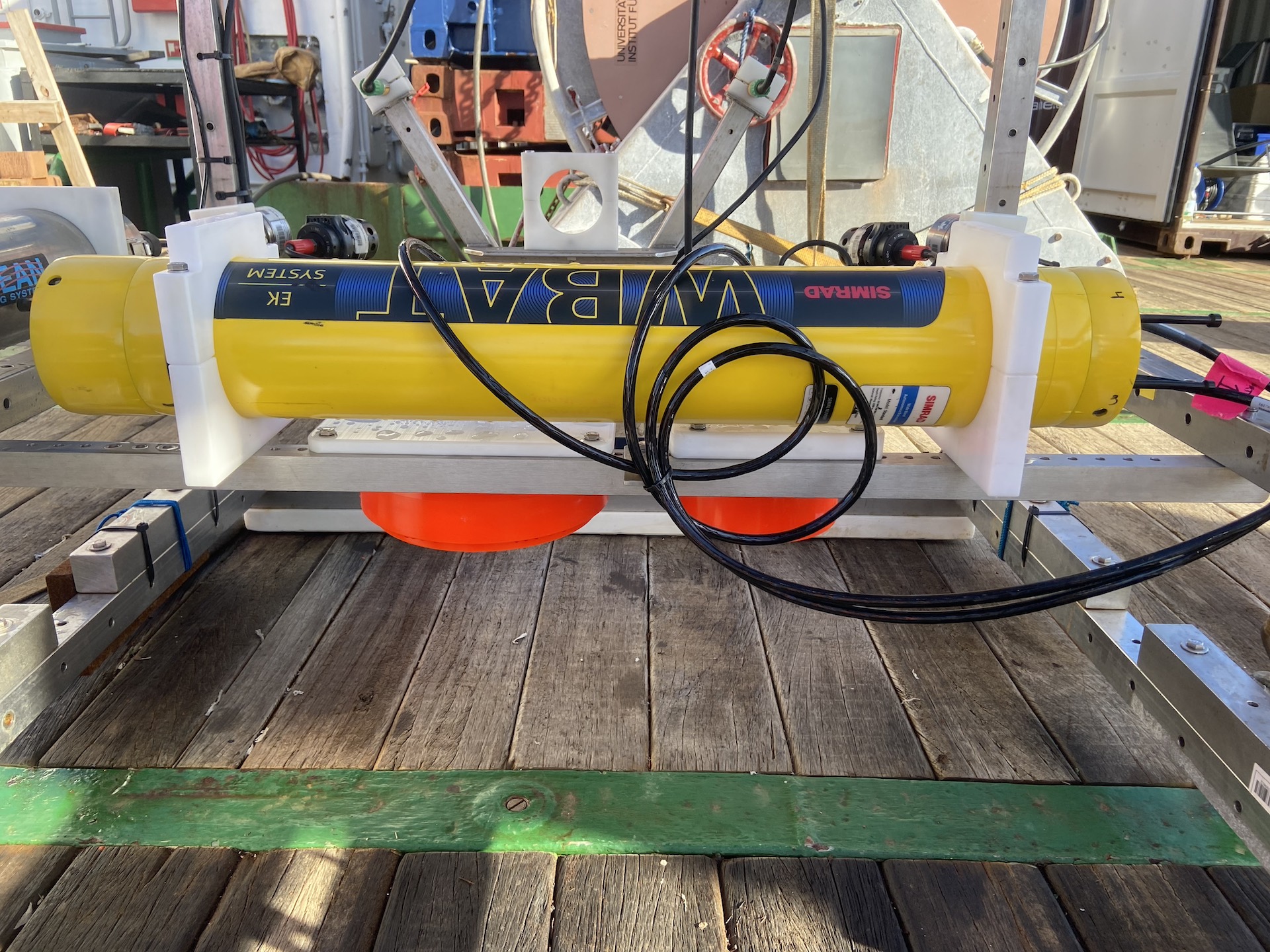by Marie Guilpin
To understand predator-prey interactions, it is essential to characterize and quantify the preyscape available to predators. One way to do so is to use hydroacoustic data. Essentially echosounders are active acoustic devices pinging at different frequencies, the echoes back from whichever is in the water column is then recorded. We used dual frequency echosounders (38 kHz and 70kHz) mounted in the moonpool and lowered under the hull of the boat (see photo below). Data recorded from echosounders document the movement, density and distribution of prey throughout the water column. Using dual frequency allows us to do discriminate between prey type, for example, between fish, cephalopods and zooplankton within the first 400m (the 70kHz being a higher frequency, it attenuates more and does not reach as deep as the 38 kHz). During the M202 cruise, we surveyed important habitat for foraging deep-diving odontocetes, both during daytime and nighttime. We could witness a mild upward vertical migration one evening and even spot (what I think) is a marine mammal on one occasion (a strong and dense echoes on both frequencies, see echogram below). It is always exciting to check the echogram and see the deep scattering layer, especially around twilight times to witness the dial vertical migration (or the lack of!).
Screenshots of echograms from the 38kHz and 70 kHz transducer showing the deep scattering layer.
Left) Upwards migration of the scattering layer. Right) The deep scattering layer and a dense school of fish. Photos: Marie Guilpin
Sperm whales and goose-beaked whales forage below what we can see with the surface mounted echosounders, and we therefore lack data at these depths. We used a dual frequency (38kHz and 70 kHz) autonomous echosounders (WBAT – Wide Band Autonomous Transceiver) mounted on the Pelagios video frame and towed to survey deep foraging habitats. WBAT data give us detailed, high definition, single target data, in other word, we are able to identify single individual cephalopods! For the WBAT we do not see real time echograms, so checking the data after each dive was always an exciting moment! Combined with visual observations, whales biologgers data, prey sampling and eDNA sampling, this gives us a unique opportunity to characterize and understand the environment in which these deep-diving odontocetes forage in!
